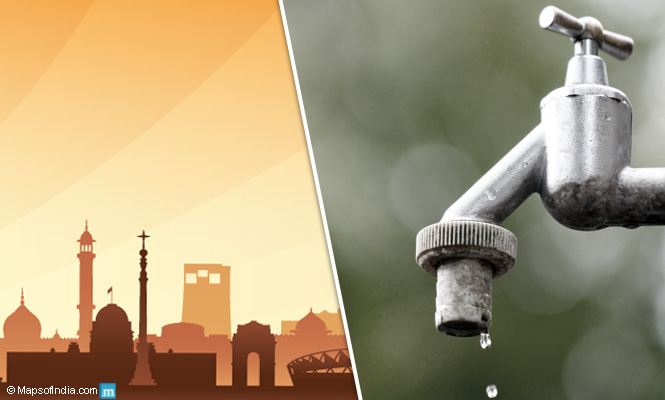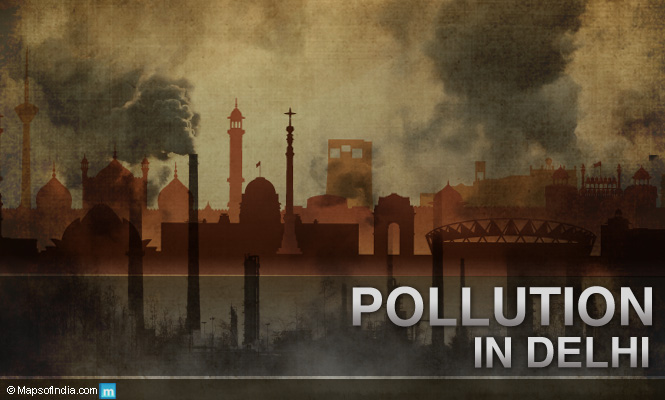According to World Bank experts, the next war among neighbouring countries and cities worldwide will be for “water” and this is a scenario the experts have predicted to take place by 2020. But in reality, in Delhi, the national Capital, the war over water has already started. There has been a continuous war going on between Delhi and Haryana regarding the sharing of water between the two States but nothing has been officially finalised. The national Capital has been facing severe water scarcity for a very long time, and now things have worse.
Why there is water scarcity in Delhi?
Well, there is not one but many causes for the water problem in Delhi. We cannot ignore its fast paced population growth. We cannot ignore the fast paced growth of slums in various localities in Delhi. Thousands of people live in Delhi without adequate water supply and sanitation services. The reason being the groundwater table is depleted. Also, the warmer climate and deficit rainfall have also led to the growth of water shortages in the Capital.
These are the general causes:
- In fact, Delhi Jal Board (DJB) who is responsible for water supply and management has not been able to arrange proper distribution of water. Most parts of the city have no piped connections. Various localities depend on tankers.
- In summers, it is a perpetual problem in Delhi. Every year, Delhi has to depend on other neighbouring States like Uttar Pradesh, Haryana, Punjab and Uttarakhand for water supply, when it has in its heart the Yamuna river. The reason being there has always been poor water management. A lot of water gets wasted.
- The Delhi Jal Board is to be blamed as it has not been able to keep its infrastructure and equipment in better condition. Most of the water , around 52%, gets wasted due to leaks in the pipelines of the DJB.
- There is also no proper water treatment and waste disposal facilities in the Capital. The poor sewage treatment causes the shortage of potable water as there are no proper means to treat sewage water for re-use.
- There are around 600 water bodies, which need to be replenished.
- Also, distribution of water haphazardly, loss of water in transmission and distribution, unauthorised use of water and unmetered water supply have all contributed towards water shortage in the Capital.
Row between Delhi and Haryana
The former Chief Minister, Sheila Dixit, during her tenure, had blamed the Haryana Government for the acute shortage of water in Delhi as Haryana had drastically reduced raw water supply. On the other hand, the then Haryana Chief Minister Bhupendra Singh Hooda had stated that Delhi was getting more water than its due share. However, on December 1, 2014, the new Haryana Government agreed to find a positive solution to the drinking water problem in Delhi. At the meeting between the higher officials of both the States, several issues such as proper allocation of waters from the Yamuna and Ravi-Beas rivers, the proportion of water in different water treatment plants in Delhi and the construction of Munak canal for supplying Delhi’s portion of water and so on, were discussed.
What should be done to solve the water problem in Delhi?
Taking measures to make the operations of the sewage treatment plants functional.
- Encouraging the use of small decentralized sewage treatment plants to recycle the water.
- Encouraging more and more rainwater harvesting. The Government should make rain water harvesting mandatory for all the residential apartments, individual houses, corporate houses and industrial units.
- Getting water is not the problem but managing water is the biggest problem. So accurate and strict measures should be taken for proper management of water resources.
- More dams should be constructed, especially in those areas where the rain water gets drained out without being used.
- Proper legal enforcement of water should be emphasised.
- There should not be demand side management. Instead, more focus should be given on the supply side management.
- Recharging the ground water.
- DJB should distribute water equally in all locations, instead of supplying water to VIP zones more than the common people’s localities.
- More and more tree plantation to replenish the ground water level
Singapore’s pricing system
The Government can also follow other countries. For instance, Singapore. In Singapore, there is a graded pricing system. The Singapore Government sets a price for a certain quantity of water consumption per month. In case the citizens consume more than the stipulated amount, they should pay extra money. This method can encourage people to conserve water and use water judiciously.
Saving water by the citizens
It is high time now that the citizens of the Capital should understand the need for saving water. Well, this is nothing new. Keep the taps close while brushing your teeth, use the bucket and not the shower while bathing, don’t use hose to water your plants or to clean your car, look for leaks in your taps and repair them immediately, don’t leave the tap running and so on. These are the basic rules that each and every one of us know from our childhood days. But, in reality do we really follow them? Since a section of the society is well-educated, it is the duty of this section to create awareness so that the common and the poor people get to know the need for conserving water and how to use water properly.
And yes, rain water harvesting is very essential in all societies and residences. Let DJB and the Government continue with their solutions and policies to solve the water crisis. In the meantime, let each one of us pledge that we are not going to waste water unnecessarily. I believe, every single drop of water saved counts a lot. It is time to aggressively start convincing the people and the Government to bring about a change in the mindset of the people.






